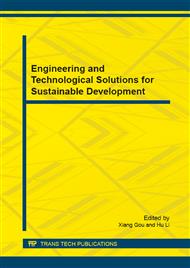p.49
p.54
p.59
p.63
p.67
p.73
p.80
p.85
p.90
The SOC Estimation for Power Battery Using KF Method which Parameters are Updated by Least Square Method
Abstract:
In this article we first introduced some methods for estimating battery’s SOC and their advantages and shortcomings respectively. With experimental data, we proved that parameters of battery model are time variant. So fixed parameter Kalman Filter (FPKF) will not be suitable, then we came up with a new algorithm named adaptive Kalman Filter (APKF),which associated two algorithms—Kalman Filter and Least Square method. Kalman Filer estimates SOC of battery, while Least Square method updates parameters used in Kalman Filter. Then we used battery’s discharging data to test whether this new algorithm took effect. The results produced by Ah-counting method was viewed as a reference because of constant current discharging situation. According to the estimating results, the results produced by APKF have much smaller deviation than that produced by fixed parameters Kalman Filter (FPKF).
Info:
Periodical:
Pages:
67-72
Citation:
Online since:
November 2014
Authors:
Price:
Сopyright:
© 2014 Trans Tech Publications Ltd. All Rights Reserved
Share:
Citation:


